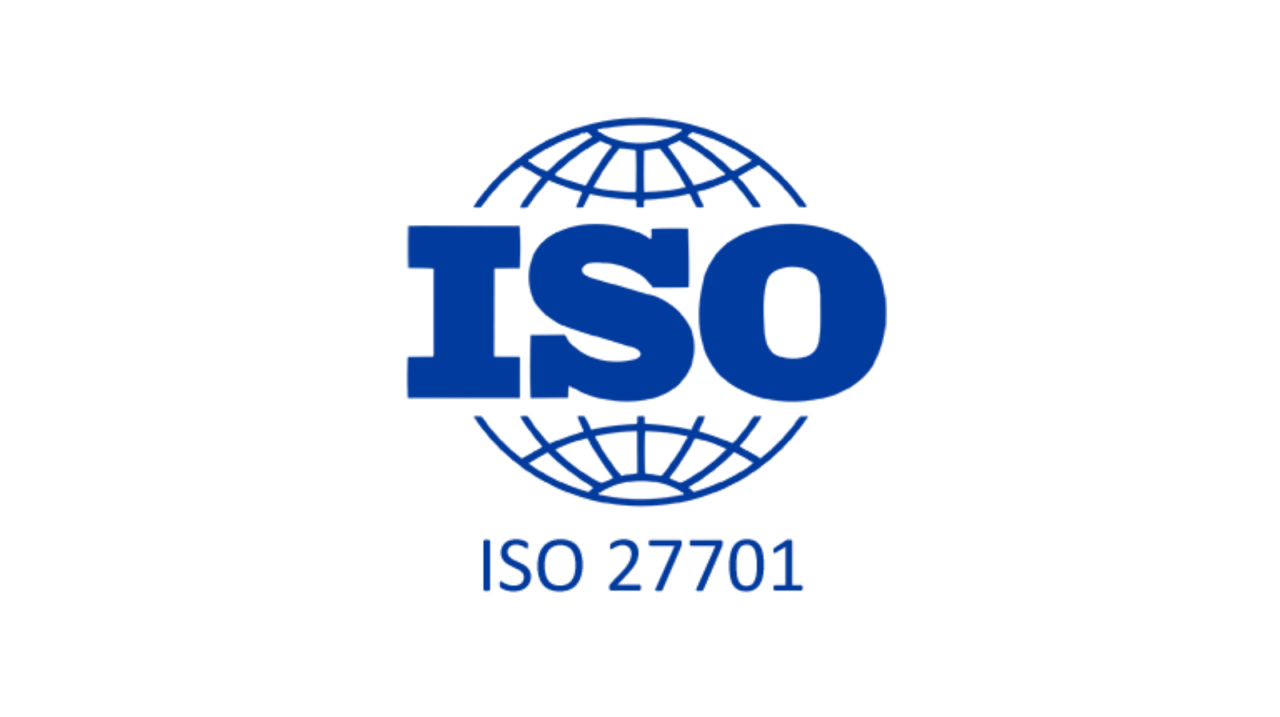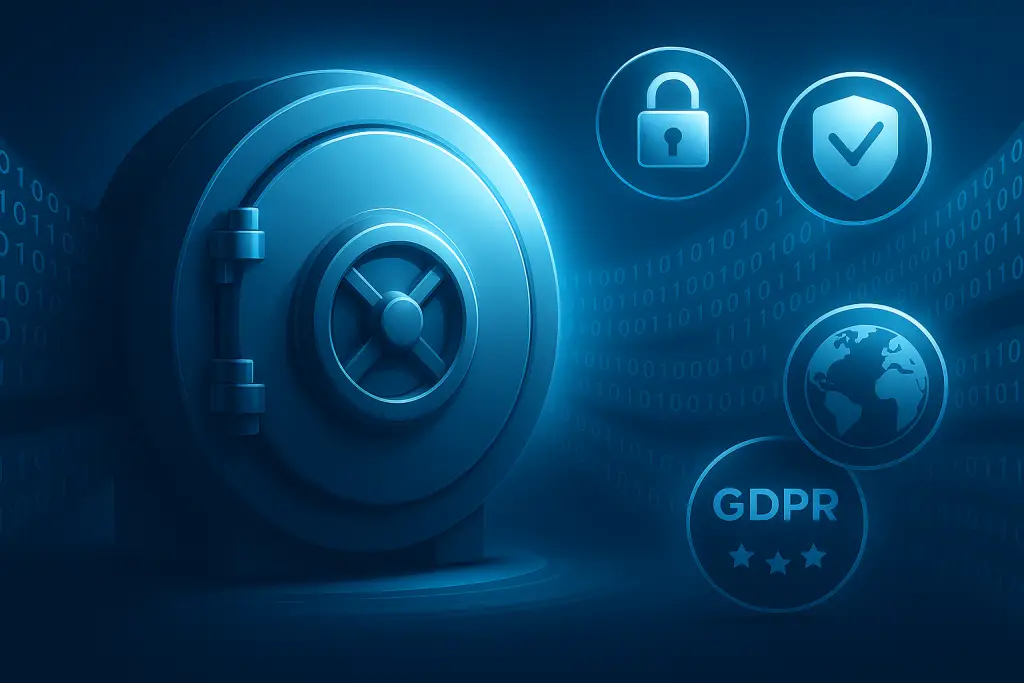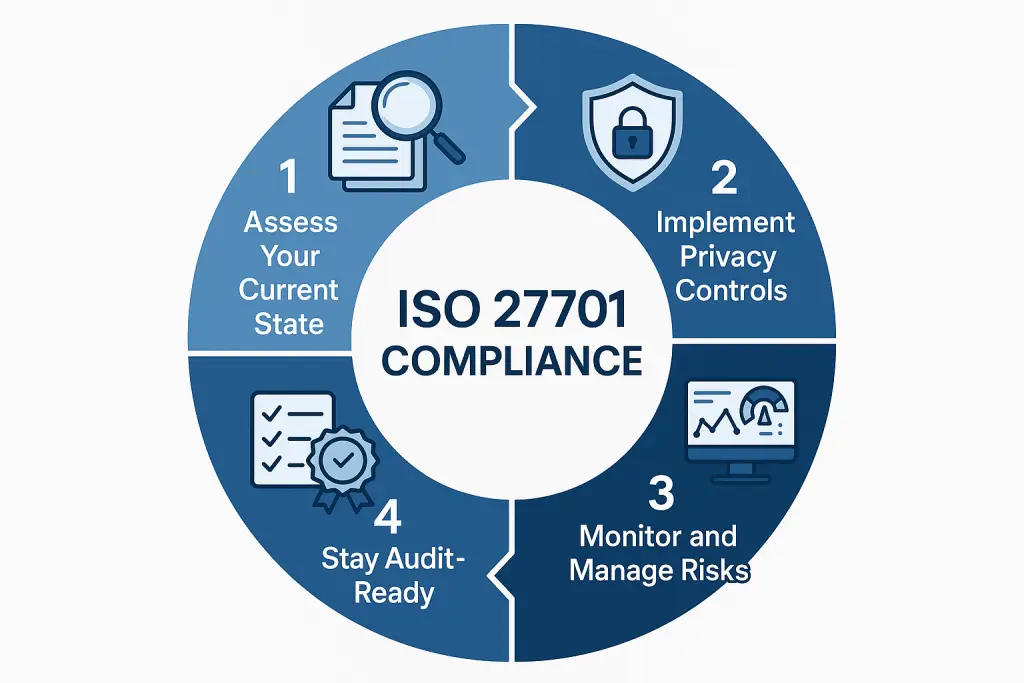ISO 27701

About ISO/IEC 27701
When you share your personal information with a company, whether signing up for an online service, applying for insurance, or purchasing goods, you expect two things: security and privacy. ISO/IEC 27701, first published in 2019, is the international standard that extends ISO/IEC 27001 (Information Security) into the domain of privacy information management.
It provides a framework for organizations to establish, implement, maintain, and continuously improve a Privacy Information Management System (PIMS). From customer names and emails to sensitive government identifiers, ISO 27701 helps organizations demonstrate accountability in how they collect, use, and protect personal data.

Explore our ISO 27001 Compliance Guide to understand how ISO standards fit together.
Think of ISO 27701 as a privacy shield for your organization:
- Roles and Responsibilities: Defines how data controllers and processors manage personal information
- Privacy Controls: Adds privacy-specific measures to the ISO 27001 and 27002 security framework
- Regulatory Alignment: Maps directly to laws like GDPR, CCPA, and other global privacy regulations
Non-compliance doesn’t just risk regulatory fines, it can also mean loss of customer trust, reputational damage, and disruption to business operations.
“ISO/IEC 27701 provides guidance for organizations to establish, implement, maintain, and continually improve a Privacy Information Management System (PIMS), enhancing the existing ISO/IEC 27001 framework.”
— International Organization for Standardization (ISO), ISO/IEC 27701:2019 Overview [Source: ISO.org]
The Challenge: Why ISO 27701 Is Harder Than It Looks
On paper, ISO 27701 seems straightforward: protect personal data with a structured management system. In practice, compliance is challenging and resource-intensive. Organizations often struggle with:
- Mapping data flows across complex, multi-cloud environments
- Aligning privacy requirements with existing ISO 27001 controls
- Managing third-party data processors and ensuring accountability
- Demonstrating compliance with evolving regulations like GDPR, LGPD, or CCPA
- Maintaining continuous audit-readiness across business units
As one privacy officer put it, “Privacy isn’t a project,it’s an ecosystem that must constantly adapt.”
4 Steps to ISO 27701 Compliance
Our approach to ISO 27701 compliance follows four structured steps:
- Assess Your Current State: Conduct a gap analysis against ISO 27001/27002 and privacy requirements. Identify data types, processing activities, and compliance gaps.
- Implement Privacy Controls: Apply administrative, technical, and organizational measures. Establish policies for consent, data retention, access control, and breach response.
- Monitor and Manage Risks: Continuously track personal data usage, perform Data Protection Impact Assessments (DPIAs), and review vendor practices.
- Stay Audit-Ready: Maintain documentation, evidence, and records of processing activities. Ensure readiness for internal audits, external certification, or regulator inquiries.

How Our Solution Makes ISO 27701 Compliance Simple
Compliance should enable business, not slow it down. Our solution automates much of the heavy lifting while aligning with ISO 27701’s structured approach. Key features include:
- Automated Gap Assessments: Instantly identify privacy and security gaps with clear remediation steps
- AI-Powered Policy Generator: Generate ISO 27701-ready privacy and security policies
- Data Mapping & Flow Visualization: Understand where personal data is stored, processed, and shared
- Audit-Ready Evidence: Keep organized proof for certification audits or regulator reviews
- Vendor Risk Management: Ensure third-party processors align with ISO 27701 requirements
- Virtual AI Privacy Officer: Get real-time guidance on GDPR/CCPA obligations and privacy-by-design decisions
Results: Trust and Accountability for Your Organization
With ISO 27701 compliance, organizations achieve:
- Stronger customer and stakeholder trust through transparent privacy practices
- Reduced regulatory and legal risk across global jurisdictions
- Streamlined operations by integrating privacy into existing ISO 27001 controls
- Future-proof compliance with evolving data protection laws
As ISO experts note: “Security protects the data, privacy protects the individual.”
Conclusion
ISO/IEC 27701 is the global standard for managing privacy risk and demonstrating accountability. By extending ISO 27001, it helps organizations integrate privacy and security into one cohesive management system. With the right approach and supporting tools, ISO 27701 can transform privacy compliance from a burden into a competitive advantage.
FAQs
- Who needs to comply with ISO 27701?
Any organization that processes personal data, whether as a controller or processor, can benefit, especially those already ISO 27001 certified. - Is ISO 27701 mandatory?
Not legally, but it provides a strong framework to demonstrate compliance with privacy laws like GDPR, CCPA, and LGPD. - Does ISO 27701 replace GDPR or CCPA?
No. ISO 27701 provides a structured way to operationalize privacy obligations, but laws and regulations still apply. - Can small businesses adopt ISO 27701?
Yes. The framework is scalable and can be tailored to fit both SMEs and large enterprises. - How long does certification take?
Typically 6–12 months, depending on the maturity of your existing ISO 27001 framework.

